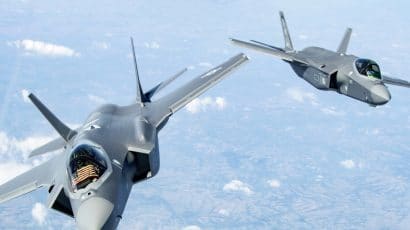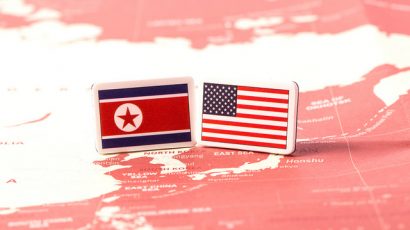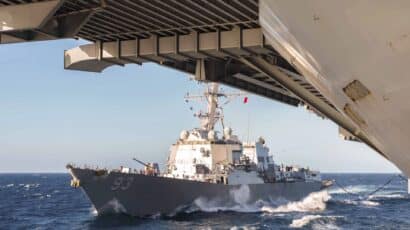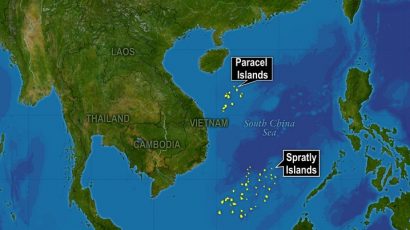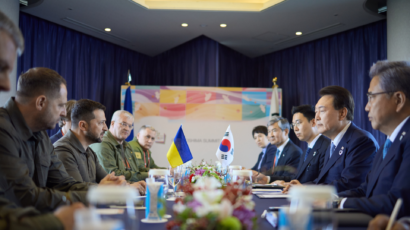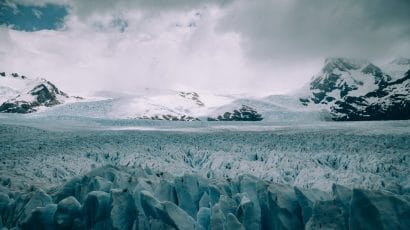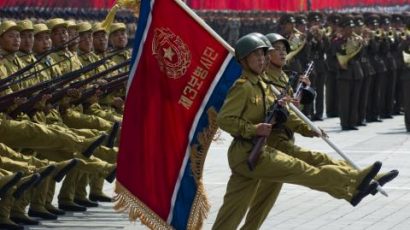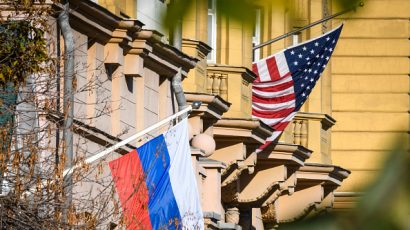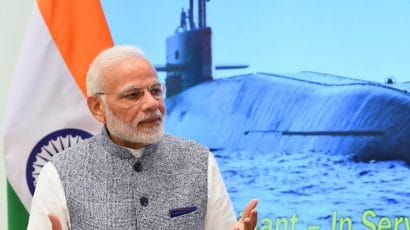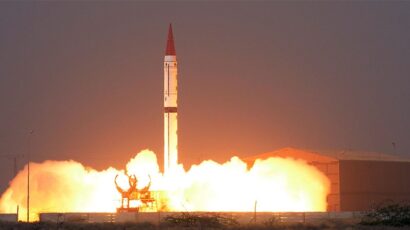Search results for
Missile defense in Japan
Japanese security policy is at a crossroads, shifting from a traditional pacifist security policy to a more assertive security policy. As part of this shift, Tokyo is steadily moving toward the deployment of a more robust missile defense system, which the Japanese government doesn't think contradicts the country's "exclusively defensive defense" policy anyway. And while the debate about U.S. missile defense installations in Eastern Europe remains contentious, in East Asia, political debate about missile defense installations in Japan seems to be fading away.
Sure, deter China—but manage risk with North Korea, too
The US is reassessing its military posture in the Indo-Pacific, largely with deterrence of China in mind. At the same time, US planners and decision-makers must contemplate possible unintended consequences of these changes with regards to a new nuclear power: Pyongyang.
Now, it’s time to deliver
Media pomp and video symbolism cannot substitute for arms control substance. The high-level goals listed in the joint Singapore statement by President Trump and Chairman Kim are extremely vague, but concrete steps are required, if the nuclear risk that North Korea poses to the United States and the rest of the world is to be reduced. The vagueness of the joint statement creates a distinct possibility that it will quickly evaporate, with regrettable—and possibly catastrophic—results for the region and the world.
Low-hanging fruit: Ratify protocols for nuclear-weapon-free zones
The Senate has basically ignored arms control for years. It doesn't have to be that way.
Deterring a Chinese military attack on Taiwan
There is a growing risk of a military attack on Taiwan by mainland China to achieve what the latter terms “reunification.” Taiwan, the US, and Japan must urgently and interactively prepare for this contingency—which is also the best way of deterring it.
Flashpoint in the South China Sea
China is not only staking out turf in this easily overlooked region. It is even creating the turf, from scratch.
Biosecurity 2.0: Enduring threats in the former Soviet Union
The announcement sent ripples throughout the international health community: On April 23, 2010, the World Health Organization (WHO) confirmed that seven children suffering from paralysis in the poor former Soviet country of Tajikistan were victims of poliomyelitis. Genetic sequencing showed that the virus had probably arrived with a traveler from India. It was the first importation of polio into Europe since 2002, when the region was certified as polio-free.
Watching Ukraine, South Korea and Japan eye nuclear weapons. Here’s what the US should do.
Officials in South Korea and Japan increasingly believe nuclear weapons would help them avoid being the next Ukraine. But they don't need them, an expert on Northeast Asia explains.
On the 20th anniversary of the 1998 nuclear tests by India and Pakistan
Here, guest editors Zia Mian and M.V. Ramana select a few of the many articles on nuclear South Asia that have been published by the Bulletin.
Taking stock: The US-India nuclear deal 10 years later
A decade has passed since negotiations first began on the “US-India Civilian Nuclear Cooperation Agreement,” an accord that, when it was finally signed, gave India a waiver from the rules of the Nuclear Suppliers Group. In a nutshell, the act ended a 34-year ban on nuclear trade with India. Popularly known as the “US-India Nuclear … Continued
The short march to China’s hydrogen bomb
In less than seven years, Chinese physicists went from launching a new hydrogen bomb research program to desperately searching foreign newspapers for any details about the H-bomb to successfully detonating a full-yield 3.3 megaton hydrogen bomb. In this feature article, a Chinese scholar tells the untold story of China’s hydrogen bomb development.
The Arctic as a bridge
No country owns the North Pole or the expanse of the Arctic Ocean surrounding it. The Arctic region has a population of about 4 million, including more than 30 distinct groups of indigenous people using dozens of languages; they have lived there for more than 10,000 years. The area also has a unique and diverse ecosystem that includes fish, marine mammals, birds, land animals, and a thriving web of bacteria, viruses, algae, worms, and crustaceans that live in sea ice.
North Korea in the news again: A time to reflect
This is a good time to take another look at some Bulletin stories that delve into the psychology behind what has been happening lately in North Korea. And discredit some common tropes.
Ideology over interest? Trump’s costly INF decision.
Former Secretary of State George Shultz has urged what seems obviously to be the wisest course on the INF agreement: “We should fix it, not kill it.” Unfortunately, it appears that the INF is in the hands of treaty killers.
What the presidential candidates should be asked about arms control and nonproliferation
The next president will have to deal with many pressing questions, but few are as consequential as this one: Do we want to live in a world in which the number of nuclear weapons is going up or going down? The American public should be aware of the candidates’ various nuclear weapons plans before they vote.
Members of the Science and Security Board of the Bulletin of the Atomic Scientists win Leo Szilard Award
The Bulletin of the Atomic Scientists: It is 5 Minutes to Midnight CHICAGO – October 4, 2013 – Two members of the Bulletin of the Atomic Scientists’ distinguished Science and Security Board have received the 2014 Leo Szilard Award. Dr. M.V Ramana, physicist and lecturer at Princeton University’s Program on Science and Global Security; and … Continued
The United States and stability in the Taiwan Strait
For more than four decades, the “one-China policy” of the US has allowed Washington to maintain unofficial ties with Taipei. But China’s growing economic power, increasing military capabilities, and mounting pressure on Taiwan pose major challenges to US security commitments regarding Taiwan.
Nuclear Notebook: Indian nuclear forces, 2020
We estimate that India currently operates eight nuclear-capable systems: two aircraft, four land-based ballistic missiles, and two sea-based ballistic missiles. At least three more systems are in development, of which several are nearing completion and will soon be combat-ready. Beijing is now in range of Indian ballistic missiles.
Pakistan nuclear weapons, 2023
Pakistan’s nuclear arsenal is estimated to currently include approximately 170 warheads. It could realistically grow to around 200 by 2025 at the current growth rate.

